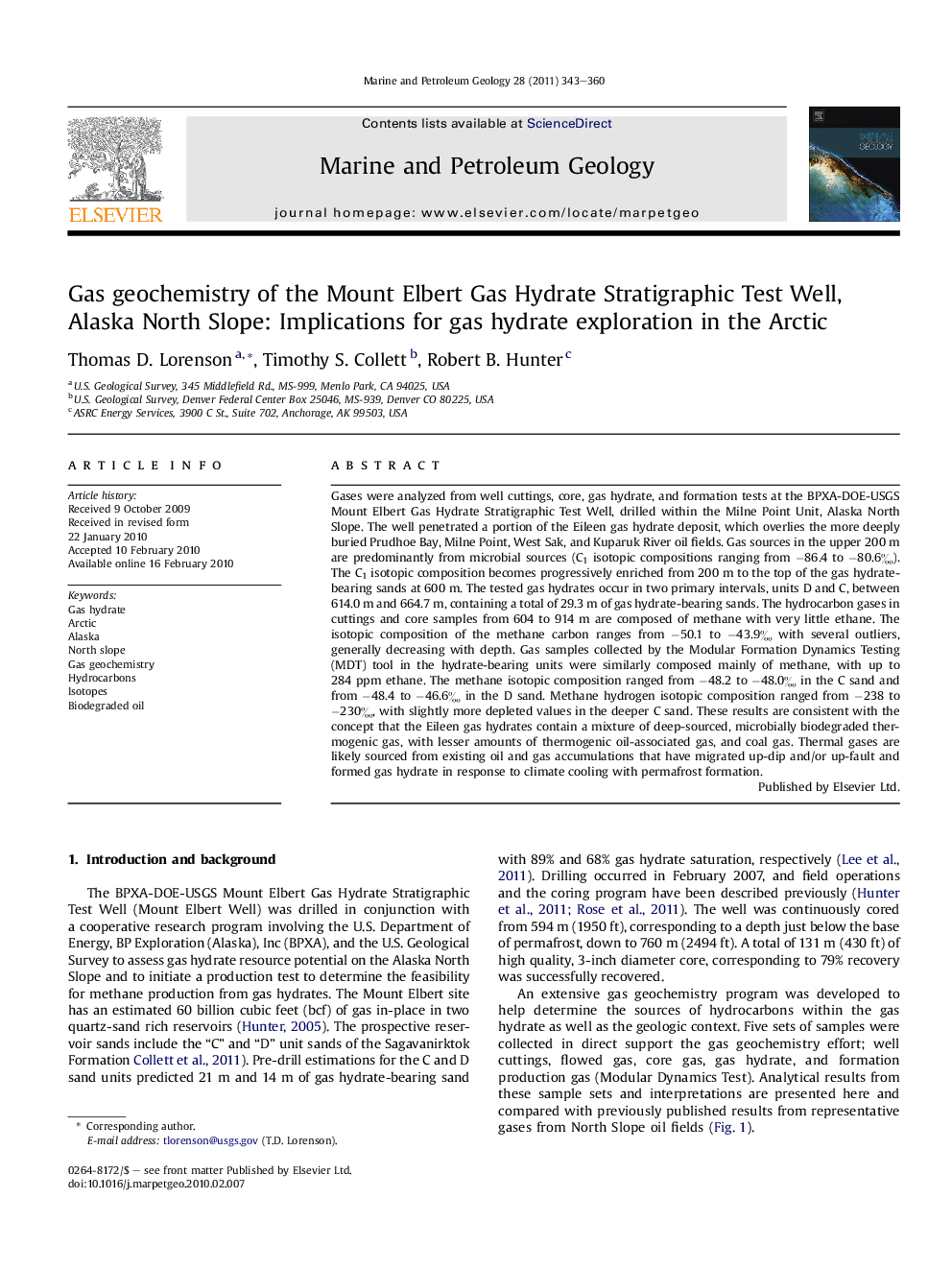| کد مقاله | کد نشریه | سال انتشار | مقاله انگلیسی | نسخه تمام متن |
|---|---|---|---|---|
| 4696092 | 1351656 | 2011 | 18 صفحه PDF | دانلود رایگان |

Gases were analyzed from well cuttings, core, gas hydrate, and formation tests at the BPXA-DOE-USGS Mount Elbert Gas Hydrate Stratigraphic Test Well, drilled within the Milne Point Unit, Alaska North Slope. The well penetrated a portion of the Eileen gas hydrate deposit, which overlies the more deeply buried Prudhoe Bay, Milne Point, West Sak, and Kuparuk River oil fields. Gas sources in the upper 200 m are predominantly from microbial sources (C1 isotopic compositions ranging from −86.4 to −80.6‰). The C1 isotopic composition becomes progressively enriched from 200 m to the top of the gas hydrate-bearing sands at 600 m. The tested gas hydrates occur in two primary intervals, units D and C, between 614.0 m and 664.7 m, containing a total of 29.3 m of gas hydrate-bearing sands. The hydrocarbon gases in cuttings and core samples from 604 to 914 m are composed of methane with very little ethane. The isotopic composition of the methane carbon ranges from −50.1 to −43.9‰ with several outliers, generally decreasing with depth. Gas samples collected by the Modular Formation Dynamics Testing (MDT) tool in the hydrate-bearing units were similarly composed mainly of methane, with up to 284 ppm ethane. The methane isotopic composition ranged from −48.2 to −48.0‰ in the C sand and from −48.4 to −46.6‰ in the D sand. Methane hydrogen isotopic composition ranged from −238 to −230‰, with slightly more depleted values in the deeper C sand. These results are consistent with the concept that the Eileen gas hydrates contain a mixture of deep-sourced, microbially biodegraded thermogenic gas, with lesser amounts of thermogenic oil-associated gas, and coal gas. Thermal gases are likely sourced from existing oil and gas accumulations that have migrated up-dip and/or up-fault and formed gas hydrate in response to climate cooling with permafrost formation.
Journal: Marine and Petroleum Geology - Volume 28, Issue 2, February 2011, Pages 343–360